The photographs edited 150 years before Photoshop
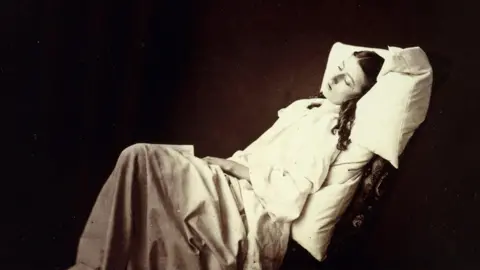 Getty Images
Getty ImagesA photographer who pioneered techniques to create detailed images by combining multiple negatives is being celebrated 170 years after he set up his first studio.
Henry Peach Robinson was one of the most famous characters of his age, said photographic historian Dr Michael Pritchard, with his work winning awards and selling widely.
"He really showed photographers at that time that photography could be art," he added.
Born in Ludlow, Shropshire, in 1830, Robinson studied drawing and painting while working in a bookshop in Leamington Spa, Warwickshire and he opened his first portrait studio in the town in 1855.
He is being remembered by the town's photographic society, with his story also highlighted in a book by a local history group.
"By 1857 he was winning medals and awards for his art photography and that carried on right the way through to the 1890s," explained Dr Pritchard, a former chief executive of the Royal Photographic Society.
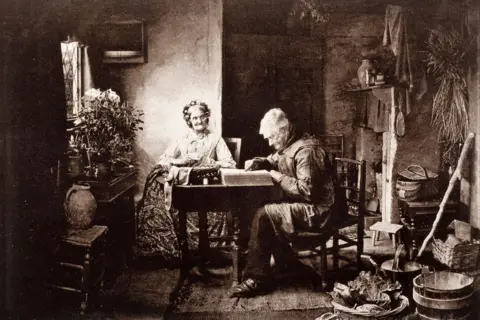 Getty Images
Getty ImagesRobinson used "combination printing", he said, creating a single image from multiple negatives.
Using this technique allowed independent control of different parts of the scenes in the finished images.
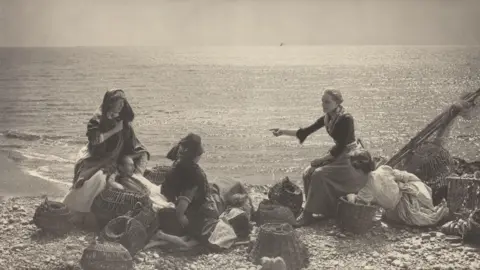 Getty Images
Getty Images"It's something we do today in Photoshop relatively easily but in the late 1850s and mid-19th Century it was a pretty groundbreaking technique," said Dr Pritchard.
"He became an absolute master of it and this was how he was able to create absolutely groundbreaking and stunning pictures."
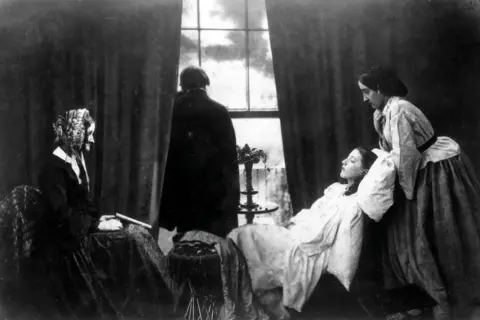 Getty Images
Getty ImagesIn one of the earliest examples of his "pictorial" photography, Fading Away, Robinson combined five separate negatives to produce a scene showing a dying girl surrounded by her family.
The image became incredibly popular despite Robinson's technique and subject matter, which was considered too morbid by some.
"As ever with that sort of genre photography of the time, there's a deeper story around it and you know all sorts of issues around how the Victorians pictured death," Dr Pritchard said.
The Metropolitan Museum of Art in New York holds a copy of the image and it said on its website that the photo appealed to Prince Albert, husband of Queen Victoria, who bought a print and issued a standing order for every major composite photograph Robinson would make.
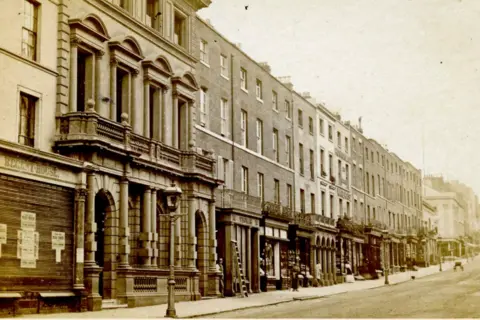 Leamington History Group
Leamington History GroupThe photographer was also a founding member of the Birmingham Photographic Society and produced a number of books.
"In terms of his importance for photography, I think he's probably a little bit forgotten these days but at the time he was still seen as a very influential figure and someone that had made a massive impact on photography," added Dr Pritchard.
 Leamington History Group
Leamington History GroupIn 1864, when he was 34, Robinson was forced to give up his Leamington studio due to ill health from being exposed to the toxic chemicals used at the time in photography.
He moved to London and continued to work until his death in 1901 in Tunbridge Wells, Kent.
"He was one of life's interesting characters," said Peter Chappell, the outgoing chair of the Leamington Photographic Society.
"He was entrepreneurial, he was commercial but at the same time he was artistic and he was promoting photography as an art form," he added.
The society recently marked the 170-year anniversary by inviting celebrity photographer Rankin to the town for an event, which attracted more than 150 people.
"That link about the world's top portrait photographer of the 1800s living and working in Leamington Spa and we got the world's top portrait photographer of current times actually coming to the town - that binds the whole story together," added the outgoing vice chair Mark Godfrey.
Follow BBC Coventry & Warwickshire on BBC Sounds, Facebook, X and Instagram.
